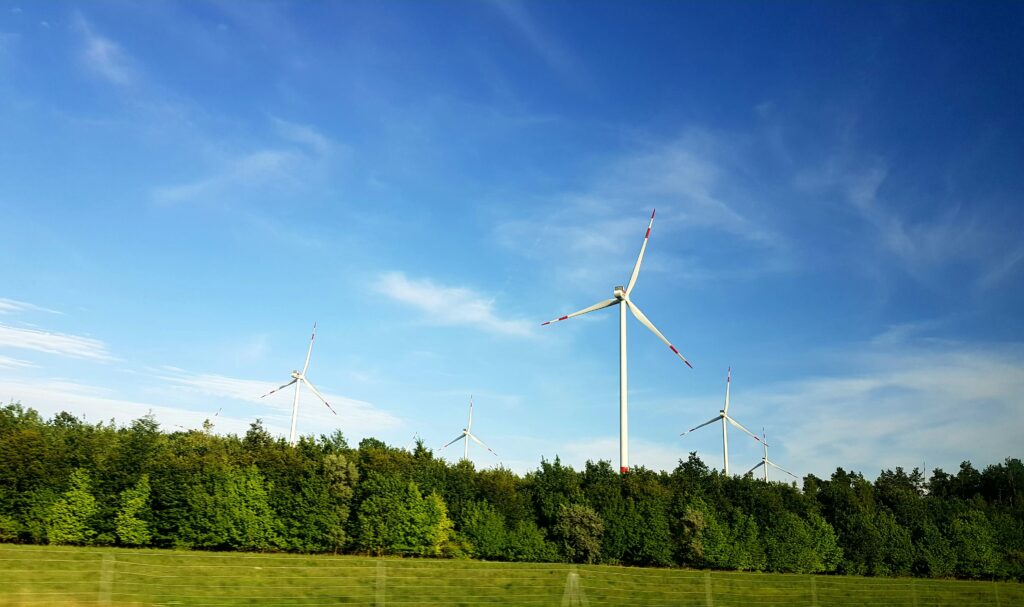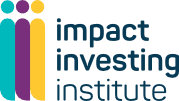
Lombard Odier Investment Managers is the asset management business of the Lombard Odier Group and has used our Just Transition Criteria to develop a sustainable private credit strategy that aims to provide catalysing capital that allows climate solution providers to scale their environmental impact, while creating new decent job opportunities.
Fund information
| Manager | Lombard Odier Investment Managers (LOIM) |
| Strategy name | LOIM Sustainable Private Credit Strategy |
| Asset class | Private credit |
| Target sector | Climate solution providers |
| Target geography / region(s) | Predominantly North America |
| Investment strategy objective | The LOIM Sustainable Private Credit Strategy (the Strategy) seeks to deliver profit with purpose via financing climate-solution providers who are capitalising on opportunities created by the transition to a low-carbon, climate-resilient economy. The Strategy aims to provide catalysing capital that allows climate solution providers to scale their environmental impact, while creating new decent job opportunities. The Strategy also aims to create additional value through personalised stewardship strategies focused on risk mitigation and value creation. Portfolio companies provide premium technology-proven, cost-efficient solutions that support the reduction of greenhouse gas emissions in our economy, while seeking to increase the accessibility and affordability of services to underserved communities. |
Alignment with Just Transition Criteria
Criterion 1: there is a product-level commitment to the three Just Transition Elements
The Strategy is dedicated to investing in innovative climate solutions which support the transition to what it describes as the Circular, Lean, Inclusive and Clean (CLIC) economy. Being classified under SFDR Article 9, the Strategy pursues climate transition as its sustainable investment objective, contributing to both climate mitigation and adaptation goals, as defined under the EU taxonomy. 100% of the invested capital is allocated to Sustainable Investments, as defined by LOIM.
To be classified as a Sustainable Investment, each prospective company must meet the requirements of a proprietary framework. The assessment is fully integrated through the investment cycle, pursuing a dual objective of risk mitigation and value creation.
The assessment includes the selection of sustainability key performance indicators (KPIs) to relevant environmental, social and governance targets, which are included as reporting covenants.
Ensuring that the transition is inclusive is a key ambition of the Strategy. The Strategy therefore works with portfolio companies to create substantial social impact, both at company- and community-level:
At the company level, the Strategy encourages companies to expand their talent pool and create measures to increase recruitment and retention of candidates from minority groups and diverse backgrounds, which have historically lacked access to opportunities for quality jobs in green industries. The Strategy also promotes the increase of diversity of thought representation within Board members and senior management, with the ambition to better take into account the needs from its different stakeholder groups (such as workers, suppliers, people living in the community).
At the community level, the Strategy promotes accessibility and affordability of products and services to underserved communities, including low-to-moderate-income communities. For example, the Strategy invested in companies that offer clean energy solutions to populations who could not access solar photovoltaic installed in their households, either because they do not own their homes or due to financial or physical constrains.
Criterion 2: Each investment within the product is assessed to avoid harm to any of the three Element
Each investment is assessed against the LOIM Classification Framework, which comprises three tests to classify a potential investee as sustainable:
- Substantial contribution
The Substantial Contribution test identifies which companies’ economic activities create a positive environmental and social contribution.
- Do No Significant Harm (DNSH)
The DNSH test evaluates whether a company is harming other environmental or social objectives, using Principal Adverse Indicators (PAIs) and qualitative assessments to identify activities incompatible with the above processes.
Environmental indicators used as part of the DNSH test include:
- Carbon footprint
- Activities Negatively affecting biodiversity sensitive areas – the Manager’s sustainability team performs a geospatial analysis for each portfolio company.
- Emissions to water
- Hazardous waste and radioactive waste ratio
Social indicators include:
- Violations to the UN Global Compact principles and the OECD Guidelines for Multinational Enterprises
- Processes and compliance mechanisms to monitor compliance with UN Global Compact principles and OECD Guidelines for Multinational Enterprises
- Unadjusted gender pay gap ratio
- Board gender diversity
- Occupational injuries
- Exposure to controversial activities
- Good Governance
Through this test LOIM seeks to ensure that the company meets good governance standards across key areas, including ownership & control structures, Board composition and independence, executive remuneration, and any relevant controversies or disputes. This includes examining the company’s relationships with its stakeholders, such as employees and supply chain contractors, aiming to identify and mitigate potential governance-related risks or controversies.
In addition, local research teams in the target region(s) conduct due diligence with prospective and current investments to understand existing community and stakeholder engagements. LOIM will establish a baseline at point of investment with respect to KPI performance, with the intention to engage and improve company performance against set KPIs over a defined timeframe. Where relevant, LOIM will support the relevant companies in furthering their contribution to the three Elements, including by supporting customer and community engagement.
Criterion 3: Through its investments, the product makes a positive aggregate contribution to all three Elements and, over time, each underlying investment contributes to all three Elements
Element 1: Climate & environmental action
The strategy aims to support the reduction of greenhouse gas emissions in the real economy by financing climate solution providers that offer technology-proven, cost-effective and ready to scale solutions. Indicators include:
- Carbon emissions (Scope 1, Scope 2, Scope 3)
- Carbon intensity
- Renewable energy enabled
- GHG emissions avoided
By 2023, 100% of the investments in the strategy were classified as Sustainable Investments under the LOIM Sustainable Alignment framework. 79% of investments were aligned to the EU taxonomy, contributing to climate change mitigation, as defined by the EU.
Element 2: Socio-economic distribution & equity
The Strategy seeks to help create new job opportunities in emerging clean technology sectors, expanding economic opportunities. The strategy pays particular focus on promoting climate solutions that benefit underserved communities that would otherwise lack access due to financial or physical constraints. In addition, the strategy seeks to encourage the creation of inclusive opportunities for decent jobs and safe workplaces. It also aims to increase diverse representation within its portfolio company workforces. Indicators include:
- Total new hires
- Client savings premium
- Number of new client households provided with clean energy
As of December 2023, 100% of the portfolio companies were ethnic minority founded, with founders frequently hailing from low- and middle-income countries. On the consumer side, portfolio companies provide new access to clean energy to 2,925 households and unlocked average energy savings of 19% per household in 2023. Beneficiaries include many households who are inhibited from installing their own renewable energy technology by upfront cost or due to renting.
Element 3: Community voice
The Strategy seeks to finance customer-centric companies who design affordable products and services tailored to the needs of end-users, while ensuring that no other negative environmental or social impact is created during production. Through targeted engagement, the strategy aims to ensure that portfolio companies implement best-in-class communication mechanisms, allowing them to continuously engage with local communities, from pre-development to operations. This approach seeks to integrate community needs, ensure safety, and foster ongoing satisfaction – a core component to support the success of a just transition.
Case study: Partnership between asset owner and fund manager in achieving a just transition
| The Environment Agency Pension Fund (EAPF), a participant in the Impact Investing Institute’s Just Transition Finance Challenge, is an investor in the Strategy. Before investing, EAPF sought to understand LOIM’s culture and values, to ensure that they aligned with EAPF. As part of this discovery process, EAPF appreciated LOIM’s science-based approach and robust support for investees, ensuring investments drive sustainable outcomes and facilitate a just transition. LOIM, for its part, sought to emphasise the importance of shared goals continuous feedback in the relationship with EAPF. Data shared with EAPF is continually refined to align with EAPF’s environmental and social goals. EAPF and LOIM found it useful that there is an increasingly common understanding of what the just transition means among different types of investors. Transparency around environmental and social objectives is critical, as it enables understanding and replication by others market actors. |
Investment Example: Providing Clean, Resilient Energy to Renters
| Through a company called PearlX, LOIM, invests in Virtual Power Plants (VPP) to deliver environmental and social benefits in California and Texas. VPPs generate clean energy and provide backup power to users. PearlX focuses on renters in multifamily communities, who benefit from discounted electricity bills. The initiative is set to serve 2,000 rental units and add 15,000 MWh of annual electricity generation, avoiding 10,000 tonnes of CO2 emissions annually equivalent to the effect of 12,000 acres of mature forest. Over the next five years, PearlX aims to serve over 35,000 rental units, helping families save an average of $250 per year on electricity bills. |
Investment Example: Community Solar Power
| LOIM invests in community solar projects through US-based Aspen Power, which accelerates and widens access to clean energy. Aspen Power’s projects allow multiple participants to benefit from shared solar installations, providing bill credits based on electricity generated. This model aids households unable to install solar panels, such as renters and those in multi-tenant buildings. In 2023, Aspen Power’s efforts reduced electricity bills by 10% for 4,434 households. Aspen Power aim to benefit over 35,000 households in the next five years. Following LOIM’s investment, Aspen produced 319,589.7 MWh of electricity and avoided 226,488 metric tons of CO2 emissions in 2023. |
This case study is provided for information only and should not be interpreted as constituting investment advice or any regulated activity. The information and figures provided are accurate as per the latest information publicly available and/or made available to the Impact Investing Institute for the purpose of this research at the time of publication.
